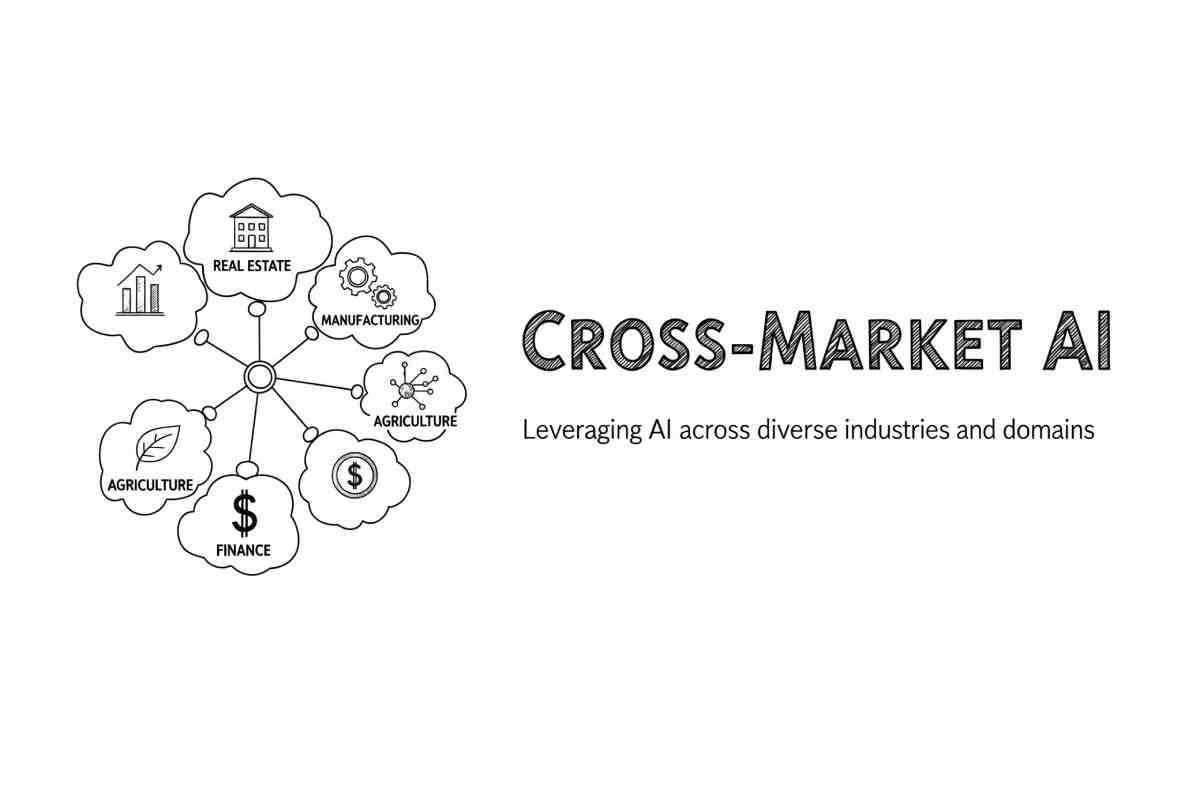Hey, I’m Arbaaz — and today, I’m diving deep into cross market ai. If you’ve been hearing about it and wondering what it really means, why it matters, and how it can benefit you, you’re in the right place. In this article, I’ll break it down step by step, with real-world examples, practical insights, and a clear explanation of why this technology is becoming a must-have for businesses, traders, and marketers.
What Is Cross Market AI?
At its core, cross market ai refers to artificial intelligence systems that analyze multiple markets or data domains simultaneously. Instead of focusing on a single market, like stocks or retail, cross market AI connects data across different areas to find patterns, correlations, and insights that aren’t visible when analyzing markets separately.
Think of it like this: traditional analysis is like looking at one puzzle piece at a time. Cross market AI looks at all the pieces together and shows how they fit, giving you a much bigger picture.
Here’s a simple breakdown:
- Financial example: Instead of analyzing just tech stocks, cross market AI monitors stocks, commodities, currencies, and even cryptocurrency markets to detect patterns and opportunities.
- Business example: For retailers, it can link online sales data, social media trends, regional inventory levels, and competitor activity to predict demand.
- Marketing example: It can connect social media engagement, search trends, offline customer behavior, and advertising performance to optimize campaigns across multiple channels.
The power lies in the ability to see relationships and dependencies between markets that would otherwise go unnoticed.
Why Cross Market AI Matters Today
Cross market AI is gaining attention for several key reasons:
- Data Explosion: Businesses and traders have access to massive amounts of data from multiple sources. AI helps make sense of it all.
- Rapid Market Changes: Markets today are interconnected. A shift in one area can ripple across others. Cross market AI detects these early signals.
- Competitive Advantage: Understanding cross-market correlations helps businesses and traders stay ahead of competitors.
- Technological Maturity: Modern AI, machine learning, and cloud infrastructure make cross market analysis more feasible and accurate than ever before.
In short, cross market AI allows you to analyze complexity, make smarter decisions, and predict trends before others do.
Key Features of Cross Market AI
When considering cross market AI tools or platforms, certain features are essential:
1. Data Integration
The ability to combine data from multiple sources — financial markets, social media, e-commerce, supply chain metrics, and customer behavior — is crucial. The more diverse your data, the richer the insights.
2. Pattern Detection
Cross market AI identifies patterns and correlations across markets that aren’t obvious. For example, it might spot that rising oil prices tend to affect tech stocks within a certain timeframe.
3. Real-Time Alerts
Markets and business environments move fast. Cross market AI can alert you in real time when patterns emerge, helping you make timely decisions.
4. Predictive Insights
By analyzing historical and current data, cross market AI can provide forecasts and predictions, giving you a head start on opportunities or risks.
5. Customizable Dashboards
A user-friendly interface allows users to track the metrics and markets that matter most to them. Visualizations make insights easier to understand and act upon.
Benefits of Cross Market AI
Here’s why professionals are investing in cross market AI:
- Better Decision-Making: Access to comprehensive data across markets allows for more informed decisions.
- Early Risk Detection: AI can identify potential risks before they become major issues.
- Time Efficiency: Automates complex analysis that would take humans days or weeks to complete.
- Revenue Growth: Helps businesses identify untapped opportunities across markets.
- Competitive Advantage: Gives companies and traders a strategic edge by seeing patterns others miss.
Real-World Examples
1. Trading and Finance
A hedge fund uses cross market AI to monitor stock prices, currency rates, commodity prices, and cryptocurrency trends. When the AI detects that rising oil prices historically correlate with declines in certain tech stocks, the fund can adjust its portfolio to mitigate risk.
2. Retail and E-Commerce
A retailer uses cross market AI to connect social media trends, search data, and inventory levels. The AI predicts which products are likely to become popular in different regions, allowing the retailer to stock the right items in the right locations ahead of demand.
3. Marketing
A brand uses cross market AI to analyze engagement across social media platforms, email campaigns, and offline sales. By identifying cross-channel correlations, the brand can launch targeted campaigns that maximize ROI.
Who Should Use Cross Market AI?
Ideal Candidates
- Businesses operating in multiple markets or regions
- Traders and investors covering multiple asset classes
- Marketing teams handling omnichannel campaigns
- Data analysts looking for advanced predictive insights
Not Ideal For
- Individuals or small businesses with limited data or resources
- Those expecting AI to replace human judgment entirely
- Users seeking “magic bullet” solutions for guaranteed success
Challenges of Cross Market AI
While cross market AI is powerful, it comes with challenges:
- Data Quality: Poor or inconsistent data can lead to inaccurate predictions.
- Model Complexity: AI models can be difficult to understand and interpret.
- Over-Reliance: Relying solely on AI without human judgment can be risky.
- Cost: Building or subscribing to cross market AI solutions can be expensive.
- Changing Correlations: Market relationships can shift, so models need constant updating.
Despite these challenges, the benefits often outweigh the risks when implemented carefully.
How to Evaluate a Cross Market AI Tool
If you’re considering using a cross market AI platform, here’s a simple evaluation checklist:
- Does it cover multiple markets or data sources relevant to you?
- Does it provide real-time alerts and predictive insights?
- Is the dashboard user-friendly and customizable?
- Can you back-test predictions using historical data?
- Is the AI explainable and transparent in how it generates insights?
- Do you have the expertise to interpret the data, or is support provided?
Choosing the right tool ensures you maximize value while minimizing risk.
Future of Cross Market AI
The future looks promising for cross market AI:
- Real-Time Analytics Across More Markets: Faster data processing will allow AI to spot trends instantly.
- Integration With IoT and Supply Chain Data: Cross market AI will expand beyond finance and marketing into logistics, healthcare, and energy.
- Improved Predictive Accuracy: As AI models become more sophisticated, predictions will be more reliable and actionable.
- Hybrid Human-AI Decision Systems: AI will handle heavy analysis while humans provide context, judgment, and creativity.
Businesses and traders who adopt cross market AI early will likely have a significant advantage in the coming years.
FAQ Section
Q1: What is cross market AI?
Cross market AI is a type of artificial intelligence that analyzes data across multiple markets or domains to identify patterns, correlations, and insights that aren’t visible when analyzing each market separately.
Q2: Who can benefit from cross market AI?
Businesses operating in multiple markets, traders handling multiple asset classes, marketing teams running omnichannel campaigns, and data analysts seeking predictive insights can benefit from cross market AI.
Q3: Is cross market AI risky?
While powerful, it comes with risks such as poor data quality, model complexity, over-reliance on AI, high costs, and changing correlations between markets. Human oversight is essential.
Q4: Can cross market AI guarantee profits or success?
No, cross market AI provides insights and predictions, but it cannot guarantee profits. It should be used as a tool to enhance human decision-making.
Q5: What is the future of cross market AI?
Cross market AI is evolving with real-time analytics, integration with IoT and supply chain data, improved predictive accuracy, and hybrid human-AI decision systems that enhance business and trading strategies.
Final Thoughts
In today’s interconnected and fast-moving world, cross market ai is more than a buzzword — it’s a strategic tool that can help you see opportunities, anticipate risks, and make better decisions. Whether you’re a trader, marketer, or business owner, understanding and leveraging cross market AI can give you a competitive edge.
Remember, AI doesn’t replace human judgment — it enhances it. By combining cross market AI insights with your expertise, you can make smarter, faster, and more informed decisions.
If you want to stay ahead, embrace the power of cross market ai — because seeing across markets is the key to staying ahead of the curve.


